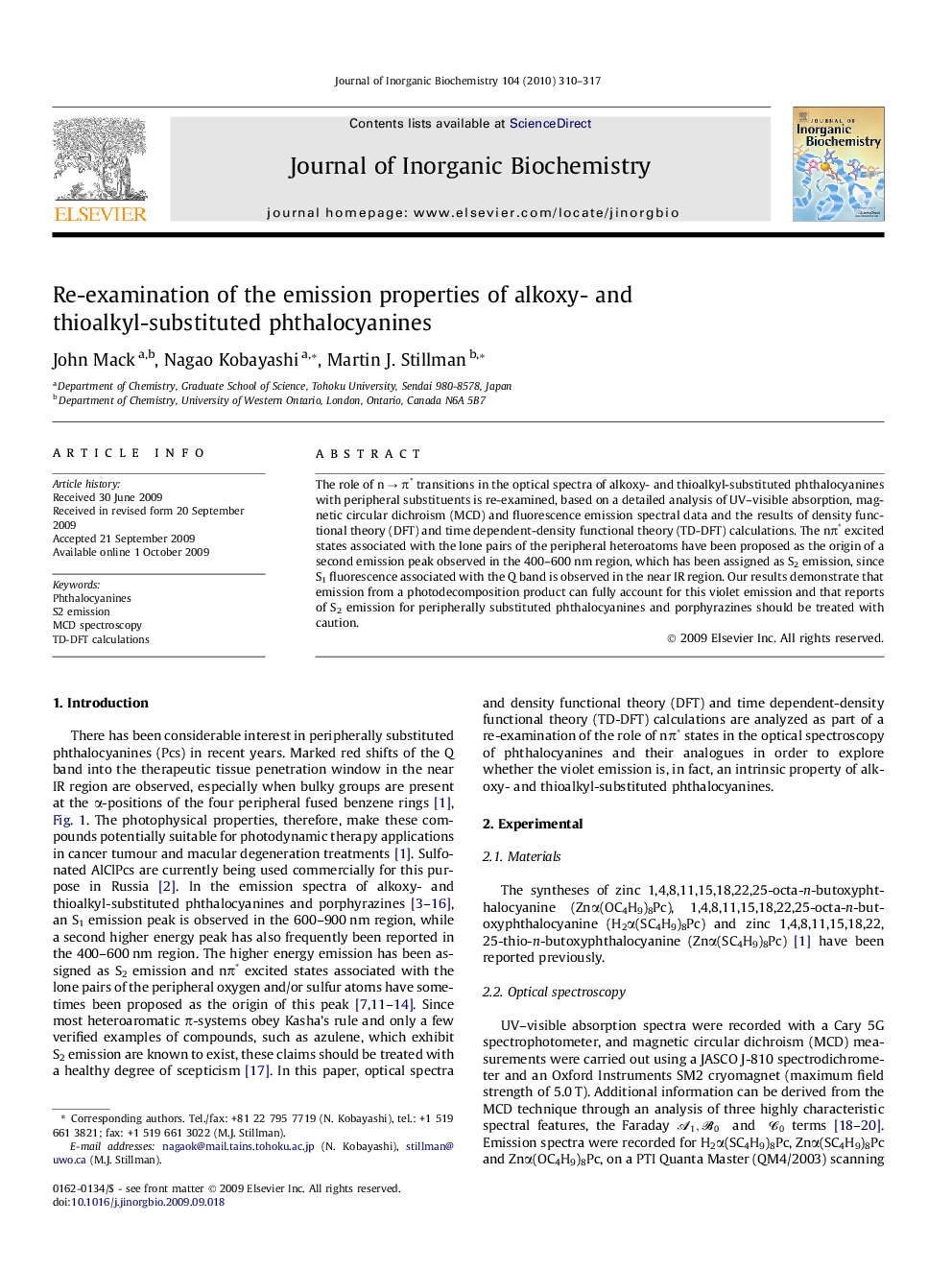| Article ID | Journal | Published Year | Pages | File Type |
|---|---|---|---|---|
| 1316131 | Journal of Inorganic Biochemistry | 2010 | 8 Pages |
The role of n → π∗ transitions in the optical spectra of alkoxy- and thioalkyl-substituted phthalocyanines with peripheral substituents is re-examined, based on a detailed analysis of UV–visible absorption, magnetic circular dichroism (MCD) and fluorescence emission spectral data and the results of density functional theory (DFT) and time dependent-density functional theory (TD-DFT) calculations. The nπ∗ excited states associated with the lone pairs of the peripheral heteroatoms have been proposed as the origin of a second emission peak observed in the 400–600 nm region, which has been assigned as S2 emission, since S1 fluorescence associated with the Q band is observed in the near IR region. Our results demonstrate that emission from a photodecomposition product can fully account for this violet emission and that reports of S2 emission for peripherally substituted phthalocyanines and porphyrazines should be treated with caution.
